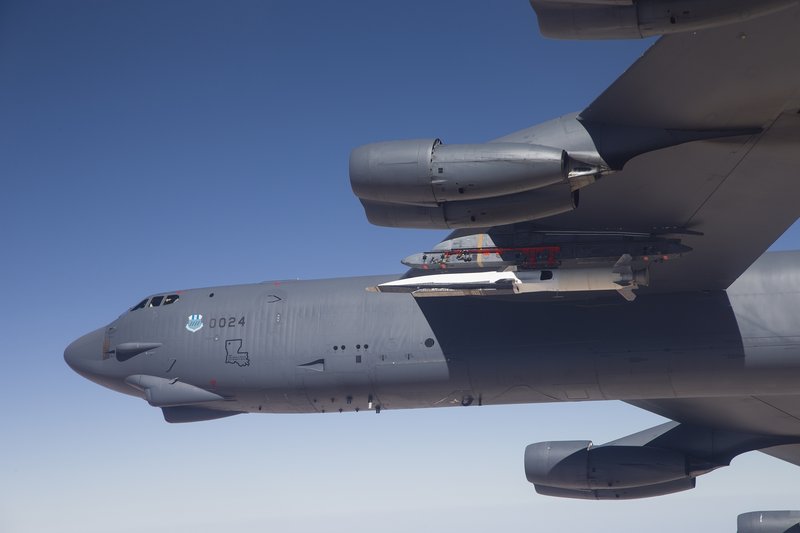LOS ANGELES – An aircraft resembling a shark-nosed missile detached from a flying B-52 bomber and then shot above the Pacific Ocean at more than 3,000 mph in a historic test flight for the Air Force — and for the future of aviation.
The unmanned X-51A WaveRider sped westward for four minutes, reaching Mach 5.1, or more than five times the speed of sound, before plunging into the ocean as planned.
It flew for longer than any other aircraft of its kind and traveled more than 264 miles, reigniting decades-long efforts to develop a vehicle that could travel faster than a speeding bullet.
A passenger aircraft traveling at that speed could fly from Los Angeles to New York City in less than an hour.
The Air Force has been flirting with hypersonic technology for more than half a century with little success. Aerospace engineers say that harnessing technology capable of sustaining hypersonic speeds is crucial to the next generation of missiles, military aircraft, spacecraft and even passenger planes.
The X-51A, built and tested in Southern California, was powered by an air-breathing engine that has no moving parts. But the technology has been exceedingly difficult to perfect, until Wednesday’s flight.
“It was a full mission success,” said Charlie Brink, X-51A program manager for the Air Force Research Laboratory Aerospace Systems Directorate. “I believe all we have learned from the X-51A WaveRider will serve as the bedrock for future hypersonics research and ultimately the practical application of hypersonic flight.”
The X-51A took off from Edwards Air Force Base, slung under the wing of a B-52 bomber. At about 50,000 feet, near Point Mugu, it was released like a bomb and engaged a solid rocket booster that accelerated it to Mach 4.8 in about 26 seconds.
After separating from the booster, the X-51A scramjet engine then lit and sped to Mach 5.1 at 60,000 feet.
A scramjet engine involves hydrocarbon fuel injected into the combustion chamber, where it mixes with air rushing through the chamber and is ignited. The X-51A then is designed to ride its own shock wave; hence, the WaveRider nickname.
After the flight, the 14-foot cruiser hit the Pacific Ocean and broke up. There are no plans to recover it.
Although the aircraft was designed to reach Mach 6, engineers said they were happy because the program objective was to prove the viability of air-breathing, high-speed scramjet propulsion.
This was the last of four test X-51A vehicles originally conceived when the $300 million technology demonstration program began in 2004. None of the other flights went the distance.
Send questions/comments to the editors.



Success. Please wait for the page to reload. If the page does not reload within 5 seconds, please refresh the page.
Enter your email and password to access comments.
Hi, to comment on stories you must . This profile is in addition to your subscription and website login.
Already have a commenting profile? .
Invalid username/password.
Please check your email to confirm and complete your registration.
Only subscribers are eligible to post comments. Please subscribe or login first for digital access. Here’s why.
Use the form below to reset your password. When you've submitted your account email, we will send an email with a reset code.